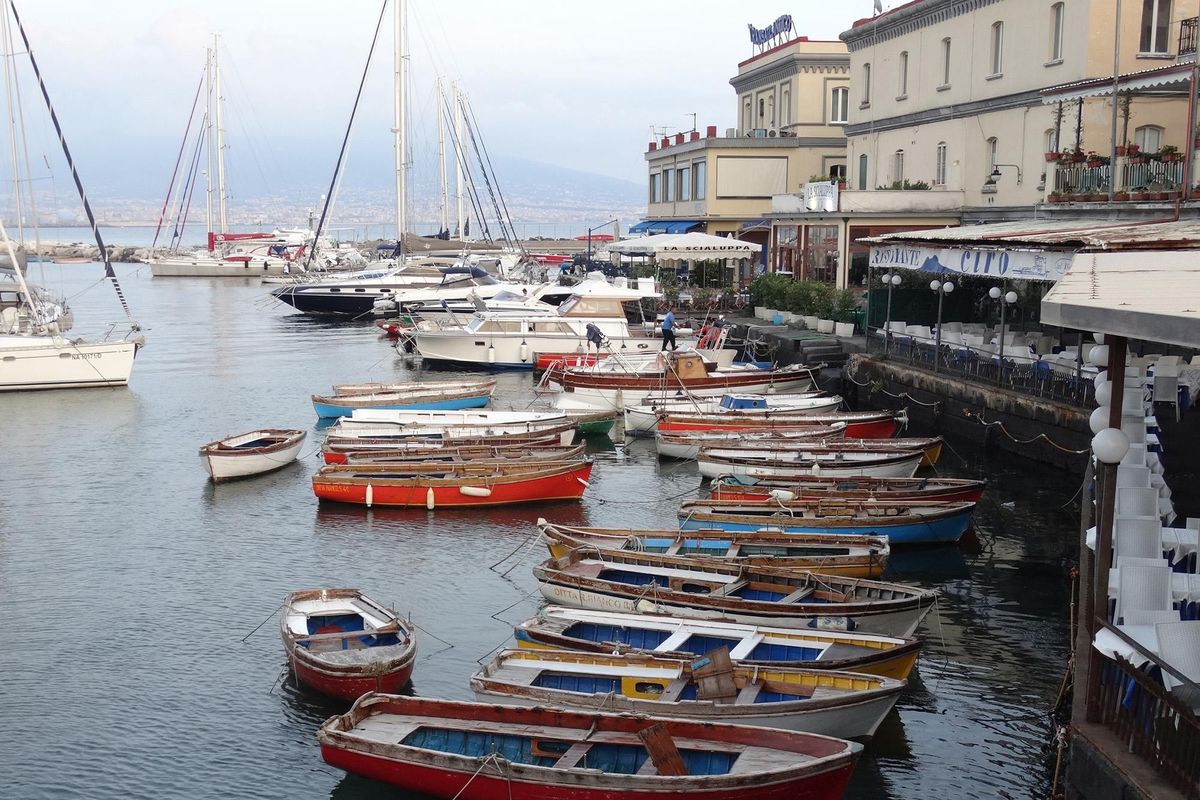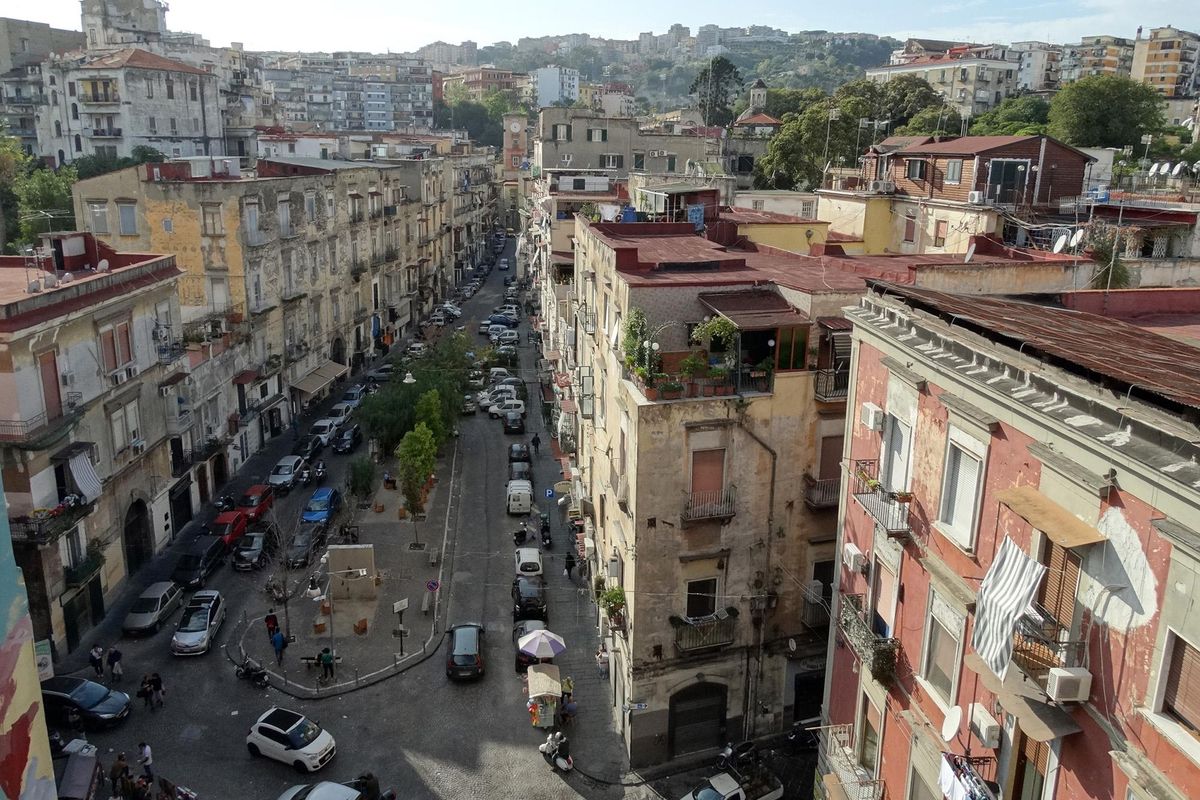Discovering the Baroque beauty of a revived Naples

On a trip to this thrumming city about 15 years ago, art historian Michael Stoughton hoped to visit a famous Baroque church in the Sanita neighborhood. An Italian friend said no – the area was too dangerous. If you must, the friend added, then take a taxi and make the driver wait for you.
Today that same neighborhood attracts thousands of tourists every year, drawn by the lovely basilica, the Santa Maria della Sanita, and two nearby catacombs that are among the most remarkable in Europe.
Sanita’s evolution is just one measure of the way Naples has transformed itself in the past decade, from a grimy and dangerous city to a destination that is worthy of travelers who are serious about European history, Baroque art and Italian street life.
For years, this southern Italian capital was a tourist afterthought. Venice had canals. Rome had the Vatican. Naples had smog, litter, street crime, flies, graffiti and crazed Vespa drivers.
That began to change in 2013, when Neapolitans staged a series of street demonstrations to demand a crackdown on organized crime and pollution. Since then, Naples authorities have scrubbed the Centro Storico, flooded the sidewalks with police and Carabinieri and converted some of the hectic streets to placid pedestrian zones.

Tourism is on the rebound, and it’s easy to understand why. In the 17th and 18th centuries, Naples was a cultural powerhouse. It was the third largest city in Europe, after London and Paris, and served as a second capital for mighty families such as the Hapsburgs and the Bourbons. Late Renaissance artists drifted down from Florence and Rome, seeking commissions from its wealthy bankers and merchants. Together, they left behind a remarkable collection of palaces, castles, churches, frescos, sculptures and paintings, including three masterpieces by the late Renaissance genius Caravaggio.
And did I mention pizzerias? We had the best pizza of our lives. Three days in a row. Without trying hard.
To be sure, Naples is still crowded and gritty. If you’ve been to Rome and found it overwhelming, you probably shouldn’t venture farther south where, as one writer put it, Italy only gets more Italian.
But we came away from a five-day visit intoxicated by Naples’ vibrant street life, charmed by its garrulous people and dazzled by masterpieces from the early Baroque.
And if you do begin to feel that Naples is crowding you, it’s easy to escape for day trips to Pompeii, the breathtaking Amalfi Coast or the Reggia Caserta, a rural Bourbon palace that is even bigger than Versailles.
Toro Farnese
Naples’ cultural pearls are small and scattered, but mainly located in the city’s old section, so it’s easy to string them together in a one-day or two-day walking tour.
A day might start at the Museo Archeologico, one of the great archaeological museums of Europe. It occupies a magnificent 17th century palazzo in the center of town and houses artifacts from Pompeii and Herculaneum, including some extraordinary mosaics and the monumental sculptures, Toro Farnese and the Farnese Hercules.
From there, it’s a short stroll to Naples’ cathedral, the Duomo, a breathtaking Baroque church; to the Sansevero Chapel, with the extraordinary sculpture Veiled Christ; and finally to Santa Chiara, where you can catch your breath and relax in the large, lovely garden cloisters.
Break up the day at whatever point you like with lunch at any one of several simple but outstanding wood-fire pizzerias along Via Tribunali. (Our favorite: Pizzeria de Matteo.) Follow that with gelato, espresso and people-watching on the Spaccanapoli – the longest, straightest street in Naples and the perfect place to rub shoulders, literally, with Neapolitans out for a stroll.
A second day might start at the Capodimonte, a palatial Bourbon hunting lodge that sits on a hilltop above Naples and houses the finest art collection in southern Italy, including stupendous works by Titian, Raphael and Caravaggio.
The aforementioned Naples catacombs are down the hill not far away. The most famous of the two, the Catacombs of San Gennaro, was founded to house the relics of Gennaro, the city’s patron saint, but soon became the favored burial place of Neapolitans who wanted to rest in eternity alongside the holy items. It is vast and more than a little creepy. A newer discovery, but in some ways more interesting, is the Catacombs of San Gaudioso, where the city honored deceased worthies by placing their skulls in wall niches atop frescoed bodies that represent civic virtues – justice, valor, piety and so forth. San Gaudioso is now maintained by an ambitious social justice nonprofit that uses tourism dollars to sponsor youth sports and train young volunteers.
The Naples waterfront is also an essential stop, although – par for Italy – reaching it from the city center can mean fighting your way through a tangle of busy streets and fenced-off construction sites. You’ll be rewarded by two magnificent sights – the Castel dell’Ovo (the “castle of the egg”) and Castel Nuovo (the “new castle,” built in the 13th century). They make lovely vistas, especially the stretch west of Castel dell’Ovo, a lovely waterfront promenade with great views and numerous sidewalk cafes.
Lost in Pompeii
Travelers who want to see Naples but can’t handle the urban scrum should consider staying in Sorrento, a town of 30,000 residents just across the bay. Sorrento sits atop a beautiful sun-drenched cliff and is the opposite of Naples: relaxed, spotless and designed for tourists. Its attractive marina has frequent ferries to Naples and its small, central train depot has regular rail service to Pompeii (a 30-minute ride).
In Sorrento you can also catch a bus or hire a taxi for a drive down the Amalfi Coast, often described as one of the most beautiful landscapes on Earth. Don’t worry which town you visit (Amalfi? Positano?) – the whole point is the hair-raising ride. Each hairpin turn reveals one amazing view after another of bleached cliffside villas and the blue Mediterranean below.
Although Naples was the core of our visit, perhaps the single greatest excursion was an afternoon trip to Pompeii. We had read up on this famous site, a Roman town destroyed and at the same time preserved when Mount Vesusius erupted in 79 A.D. But we weren’t prepared for the scale and detail: It sprawls across a large site and is worth several hours. You can lose yourself in the grid of alleyways, courtyards, temples and half-preserved houses, but you’ll learn how Roman citizens actually lived day to day, right down to swabbing their streets and taking a bath.
A second day-trip destination, less known than Pompeii but arguably as great, is Paestum, an abandoned city from the 6th century B.C. with three of the greatest preserved Greek temples in the world. The Doric masterpieces loom over a grassy plain, each offering a stately study in the Classical aesthetics of order and balance. Do not miss the adjacent museum, which contains a 5th century B.C. Greek burial chamber known as the Tomb of the Diver. Its astonishing frescoes show you in vivid detail how the Greeks thought about life and afterlife.
If Sorrento itself doesn’t bathe you in sufficient beauty, take a 30-minute ferry ride to Capri. This vertiginous island with vertiginous views has attracted the rich and famous from Emperor Tiberius to Oscar Wilde, and looking down from the beautiful cliffs, it’s easy to imagine Beyonce or Mick Jagger sunning on the deck of a bobbing yacht. A funicular railway takes you from the marina to the hilltop town of Capri, and if those views aren’t breathtaking enough, you can catch a bus to a higher town, Anacapri, and take a chairlift to the summit of Monte Solaro. The town of Capri is packed with touristy shops, high-end and low; a better bet might be a boat tour around the island or a stroll through Giardini di Augusto, with spectacular views of the sea.
OK, you won’t come home from Naples raving about romantic canals or the imperial Vatican. But spend a few days there and you’ll be able to repeat the lines that Goethe found so memorable: Vedi Napoli e poi muori. (“See Naples, and then you can die.”)